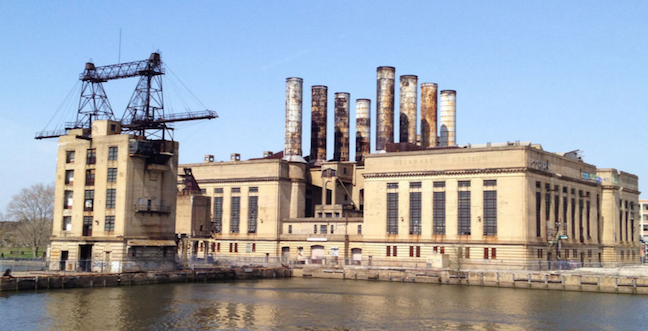At 1325 Beach St., next to Penn Treaty Park, sits an amazing building that was constructed almost a hundred years ago. The Delaware Generating Station was designed by John Windram, the same guy that designed the Franklin Institute. If the power plant were located in a similarly trafficked area, it might get similar accolades.


PECO took the building out of service a little over a decade ago, and last year their parent company put the property up for sale, retaining Binswanger to guide the bidding process. For potential buyers, the property represented a great opportunity, with almost ten acres of land on the Delaware River. But the property also had numerous challenges, per Hidden City. The building is not certified historic on a local level, so it can be demolished. But demolition costs could be prohibitive. The building doesn't have federal historic status either, which could limit access to historic tax credits for those interested in reuse. And you've got to imagine that there are some serious contaminants in the building, thanks to its many years of use as a power plant.
A little over a week ago, the Inquirer broke the story that developer Bart Blatstein was partnering with Joe Volpe, owner of Cescaphe Event Group, to buy the building and the adjacent lot. The article mentions plans for a pair of boutique hotels, each with an attached ballroom, with apartments possible in a future phase. An email from Fishtown Neighbors Association advertising a community meeting included additional details, describing a "proposal to reuse the existing PECO power plant for an events hall with 3 ballrooms, corporate headquarters, floral services, (2) restaurants, 80 hotel rooms, 430 parking spaces, and a riverfront trail." We were hoping to attend the meeting, scheduled for tonight, to get some more details. But thanks to that pesky #Jonas situation, the meeting has been postponed. Darn.
While we await a new meeting time and additional info, we encourage you to take a look at this photo essay of the power plant, shot in 2014. And while you're looking at the photos, you can dream a little about what an adaptive reuse would mean for this impressive property.

Leave a Reply